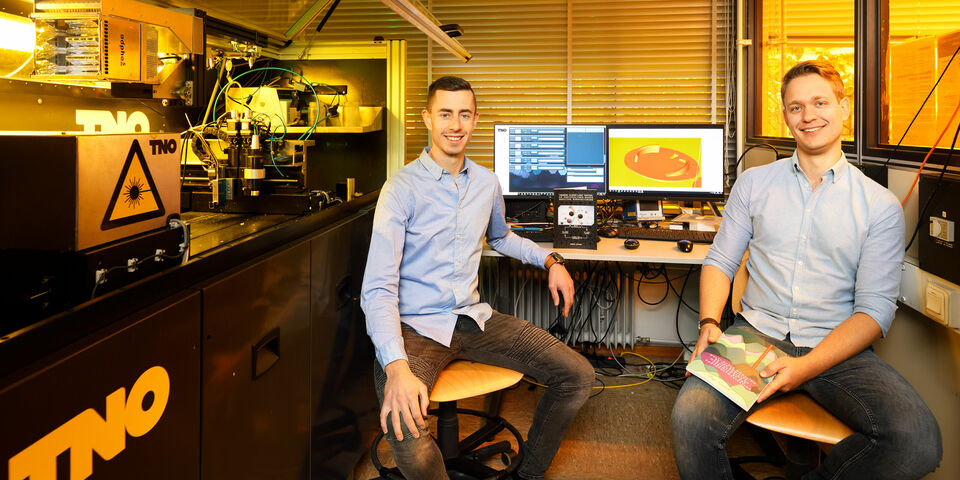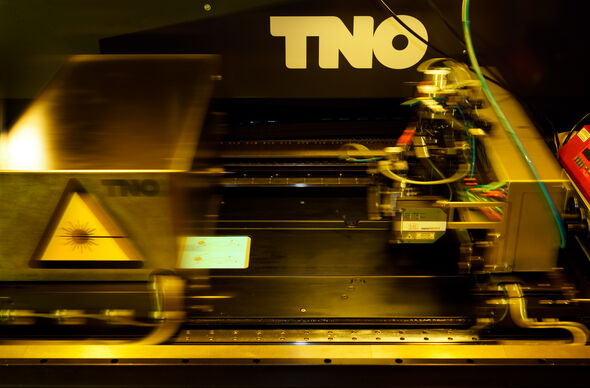Home Stretch | Ceramic 3D printing
It is happenstance that keeps bringing Steyn Westbeek and Thomas Hafkamp together. Once upon a time they started their Mechanical Engineering degrees at the same time, they met up again at University Racing Eindhoven and they will be bringing their time at TU/e to a close on exactly the same day. On October 26th they both gain their doctorate for research on the 3D printing of ceramics; Westbeek as a materials expert and Hafkamp as a control engineer.
Inseparable friends would not be an apt description of Steyn Westbeek and Thomas Hafkamp, yet the paths of these two mechanical engineers keep on crossing. “It's not something we've ever arranged, it's always just happened,” says Westbeek(on the right side of the picture). “First, we did an OGO project together and later we bumped into each other again at University Racing Eindhoven,” adds Hafkamp. “I was team manager at the time and Steyn was working on the chassis. After that we saw virtually nothing of each other for years because we had chosen different master's specializations. Steyn is a materials man and my field is control engineering.”
Both areas of expertise were valuable in a research program run by TU/e's own High Tech Systems Center in cooperation with TNO, the aim of which was to take ceramics 3D printing to a new level. Mixing together ceramic powder with a polymer resin clears the way for using a 3D printer to make ceramic objects in any shape. “You apply the resin in ultra-thin layers,” Hafkamp explains. “After every step you let the resin harden by bathing it in UV light.” At the end of the process in the kiln the ceramic object appears as the resin burns away.
Little deformation
Ceramic is an ideal material for making objects that need to be lightweight and not inclined to deform under mechanical forces and fluctuations in temperature. The idea is that, using a next generation of large 3D printers, you should be able to produce, say, the wafer chucks used to position silicon wafers to the nanometer in chip machines, Hafkamp explains. “And in order to cool the wafer chuck, channels could easily be incorporated during the 3D printing process.”
But 3D printing is a time-consuming process, and whether or not it has been successful is often known only retrospectively. “3D printers are still deaf and blind to defects,” to use Hafkamp's words. “They cannot make the necessary correction when things go wrong.” As members of various research groups, both Westbeek and Hafkamp have worked on this problem.
Westbeek focused on how the UV light affects the hardening of the resin. To do this he developed models that bridge the relevant length scales - the wave length of the laser light, the grain size of the ceramic powder and the size of the printed object. As he says, this is not easy to do. “But thanks to this, we can now predict the warping of the material as well as the influence of the ceramic powder on how the print layers adhere to each other. So, for example, you can estimate in advance whether a particular geometry is realistic.”
Eyes and ears
Hafkamp was charged with giving the printer “eyes and ears” so that while printing is still in progress adjustments can be made to head off problems. “I have shown that you can intervene before the hardening process is complete. I developed a sensor based on infrared light. By looking at how much of this light is passing through the material, you can estimate the extent of the hardening.” Not only is this sensor very quick, it can also detect very small anomalies, says Hafkamp.
Whether there will be a follow-up to the program involving ceramic 3D printing is not yet known. For the time being, the responsible body AMSYSTEMS Center is concentrating on 3D printing for ‘Food & Pharma’. That Westbeek and Hafkamp are now joining the same employer will come as no surprise. “By chance, via Bright Society we have both been taken on by Philips.”



Discussion